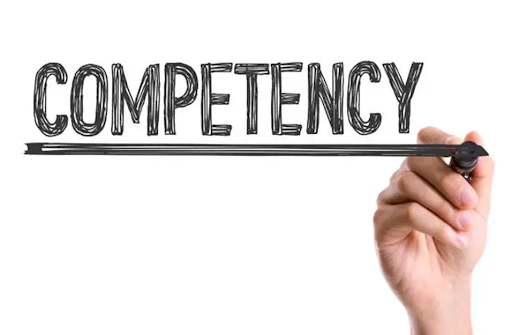By Martin Li, M.A., CRCST, CER, CIS, CHL
Introduction
ANSI/AAMI ST79, Section 4.2.2, states that “the
responsibility of sterile processing should be assigned to qualified
individuals who have demonstrated competence in all aspects of sterile
processing.” Creating competency checklists for Sterile Processing Department
(SPD) technicians is crucial for ensuring compliance with high standards in
healthcare facilities. Competency checklists are tools that help in assessing
and verifying the skills and knowledge required for various roles within the
SPD. This article, from the perspective of an SPD educator, will guide you
through the process of creating such a checklist based on Standard Operating
Procedures (SOPs), standard works, and best practices. Additionally, it will
emphasize the importance of understanding department workflows and the specific
competencies required for sterile processing technicians at each stage of these
workflows. The article will also review the concept of "competency"
and how it is measured against quality expectations, as well as the
responsibility of sterile processing technicians in assessing departmental
processes and proficiencies.
Understanding Department Workflow
Before delving into the creation of the competency
checklists, it is essential to understand the workflow within the SPD. The
department workflow typically includes the following areas:
- Decontamination:
The initial phase where used instruments and equipment are cleaned.
- Assembly
and Packaging: Clean instruments are inspected, assembled into sets,
and packaged.
- Sterilization:
Packaged instruments are sterilized using various methods such as steam,
ethylene oxide, or low-temperature sterilization.
- Storage
and Distribution: Sterilized instruments are stored and later
distributed to the necessary departments.
Each area of the workflow requires specific competencies
from SPD technicians. Understanding the intricacies of these areas helps in
identifying the skills and knowledge that need to be assessed and developed. [1],[2].
The Concept of Competency
Competency refers to the combination of skills, knowledge,
and behaviors that enable an individual to perform tasks to a defined standard.
In the context of SPD, competency involves technical skills in instrument
handling, knowledge of sterilization processes, adherence to SOPs, and the
ability to troubleshoot issues [1].
Competency is measured against quality expectations through
performance evaluations, proficiency testing, and continuous education. Quality
expectations are often defined by regulatory bodies and professional
organizations such as the Association for the Advancement of Medical
Instrumentation (AAMI) and the Healthcare Sterile Processing Association
(formerly IAHCSMM) [3].
Creating a Competencies Checklist
1. Identify Core Competencies
Begin by identifying the core competencies required for each
area of the SPD workflow. These competencies should align with the SOPs,
standard works, and best practices in the field. Core competencies may include:
- Knowledge
of decontamination principles and procedures [1].
- Proficiency
in assembling and packaging instruments.
- Understanding
of sterilization methods and protocols.
- Skills
in storage and distribution of sterile instruments.
2. Develop SOP-Based Competencies
Each SOP in the SPD should be translated into specific
competencies. For example, an SOP on steam sterilization might include
competencies such as:
- Ability
to operate and maintain steam sterilizers.
- Understanding
the parameters for effective steam sterilization (time, temperature,
pressure) [3].
- Knowledge
of troubleshooting common issues with steam sterilization.
3. Incorporate Standard Works
Standard works provide the foundational knowledge required
for SPD technicians. These may include guidelines from professional
organizations, regulatory standards, and industry best practices. Incorporate
these into the competencies checklist by including competencies such as:
- Familiarity
with AAMI standards for sterilization [1].
- Understanding
of OSHA regulations for workplace safety.
- Knowledge
of infection control guidelines from the CDC.
4. Integrate Best Practices
Best practices represent the most efficient and effective
methods in the field. These practices evolve based on new research and
technological advancements. Ensure that the competencies checklist reflects the
latest best practices by including competencies such as:
- Ability
to implement new sterilization technologies.
- Knowledge
of best practices in instrument tracking and inventory management.
- Skills
in continuous quality improvement and process optimization.
5. Assessment and Validation
Competencies should be regularly assessed and validated to
ensure that SPD technicians meet the required standards. Methods of assessment
may include:
- Performance
Evaluations: Regular assessments of technicians’ performance in their
day-to-day tasks [1].
- Proficiency
Testing: Periodic testing of specific skills and knowledge.
- Continuing
Education: Ongoing training and education to keep technicians updated
with the latest standards and practices [3].
Importance of Understanding Department Workflow
Understanding the department workflow is critical for
several reasons:
- Quality
Assurance: Ensures that all processes are performed to the highest
standards, minimizing the risk of contamination and infection [1].
- Efficiency:
Helps in identifying bottlenecks and areas for improvement, leading to
more efficient workflows.
- Training
and Development: Provides a clear framework for training new
technicians and developing the skills of existing staff [3].
Responsibilities of Sterile Processing Technicians
Sterile processing technicians have a crucial role in
maintaining the quality and efficiency of department processes. Their
responsibilities include:
- Adherence
to SOPs: Ensuring that all procedures are followed accurately.
- Continuous
Improvement: Identifying areas for improvement and implementing best
practices [3].
- Proficiency
Assessment: Regularly assessing their skills and knowledge to ensure
they meet the required standards [1].
- Documentation
and Reporting: Keeping accurate records of all processes and reporting
any issues promptly.
Conclusion
Creating a competencies checklist for SPD technicians is
essential for maintaining high standards in healthcare facilities. By basing
the checklist on SOPs, standard works, and best practices, and understanding
the department workflow, you can ensure that all technicians are competent in
their roles. Regular assessment and validation of competencies, along with
continuous education, are key to maintaining these standards.
References
- Thurmond,
T. (2020). Power
of Competency Checklists for Sterile Processing | Healthcare
Purchasing News (hpnonline.com)
- Noorani,
S. (2024). https://www.healthtechacademy.org/sterile-processing/sterile-processing-technician-skills/
- Indeed
Editorial Team, (2024). https://www.indeed.com/career-advice/resumes-cover-letters/sterile-processing-technician-skills





ANSI/AAMI ST79, Section 4.2.2, states that “the responsibility of sterile processing should be assigned to qualified individuals who have demonstrated competence in all aspects of sterile processing.” Creating competency checklists for Sterile Processing Department (SPD) technicians is crucial for ensuring compliance with high standards in healthcare facilities.
ReplyDelete